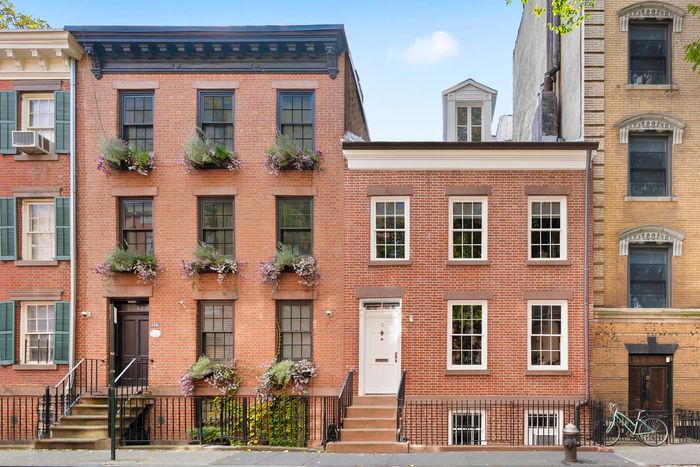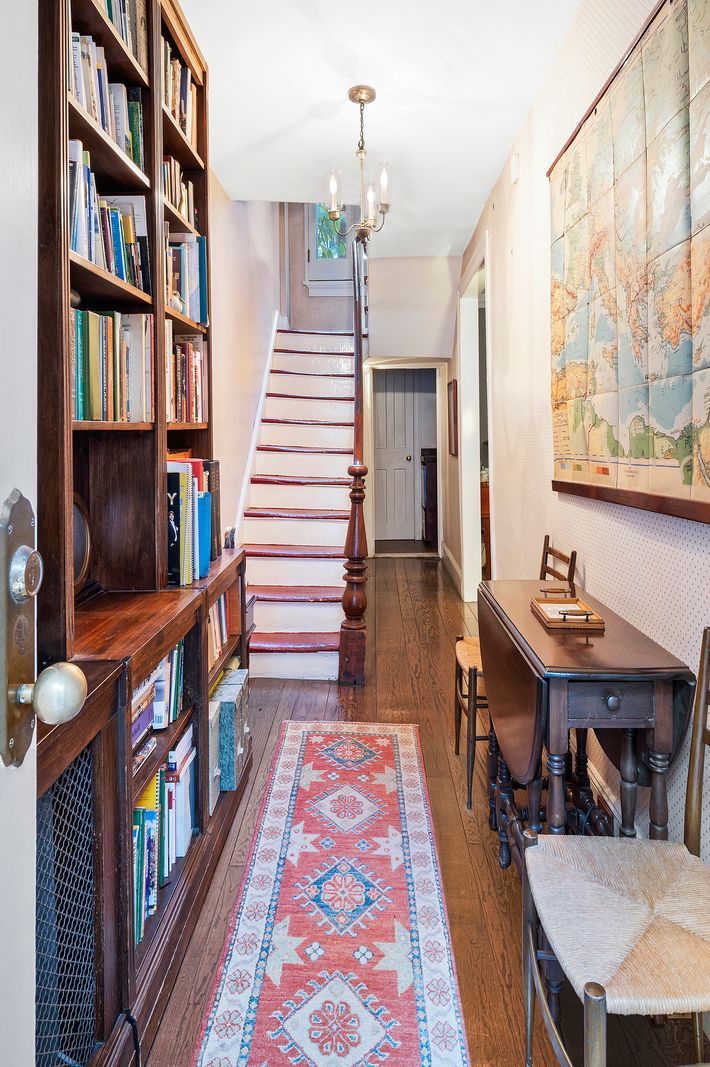
Donna Pond couldn’t get the little house on Barrow Street out of her head. It was 1976, and Pond and her partner, Daniel Bergman, had been living on East 6th Street, where the bohemian allure was fading. They missed the comforts of their suburban, childhood homes in Syracuse and Cleveland — but joked that they were unwilling to live above 14th Street. They dreamed of the West Village.
Bergman and Pond weren’t rich. They met in the 1960s working in the back offices of Bamberger’s, the New Jersey department store. Bergman was artsy, always doodling, and he was friends with lots of poets. Pond was levelheaded, a reader who loved to learn and teach. They fell in love over food, spending their paychecks at fine restaurants uptown and making an annual pilgrimage to Louisiana for crawfish season. They didn’t want kids. When they first saw the house on Barrow Street, just off Bleecker, they were put off by how much work it might entail: The 150-year-old home was in bad shape, with chunks of plaster falling from the ceiling. The owners had tried and failed a full renovation. But the couple could see its potential. “We were both drawn to the older places that had a little more character,” said Pond. “We didn’t want to be upscale.” They took out a mortgage for $92,000 — around $475,000 today — and never left; Bergman was in the house until his death last year from heart failure.
Pond’s broker Gino Filippone describes the place as “the sweetest little house on the most expensive, highly coveted street in the West Village.” It’s one of a small row of wood-framed houses that a group of builders built for themselves and other workers in 1826. While neighbors on the row were renovated to add a full third story, No. 51 kept its peaked roof with a dormer window. Part of the English basement still had a floor of packed dirt when Pond and Bergman arrived. They made renovations without adding frills, stripping plaster to expose beams and restoring wood floors. The primary bedroom was polished to reflect the home’s original, Federal style, with historically accurate wallpaper and a wood-burning fireplace. Small extensions, unnoticeable from the street, added a powder room off the back of the house and raised the ceiling of the back of the top floor, to make a room for guests more comfortable. The couple landscaped the backyard with the plants of the northern Adirondacks, where they hiked and foraged.
But the most lovingly renovated room is hidden from a casual guest, who enters one floor up. In the English basement, Bergman and Pond turned a homely kitchen into one that would suit two chefs. There are six burners on the stove and a double oven; a marble counter for pastries; and a bar where guests can pull up a stool and watch the action. Friends came here for an annual event: a unique Thanksgiving, dedicated to the traditional cooking of a specific region. “We were just sick of turkey, and we were interested in exploring different techniques and ingredients.” The couple would plan for weeks to build a menu that reflected types of cooking in Spain, Italy, Turkey, Morocco, Algeria, Peru, and Mexico. “We kept coming back to France, because everyone likes French cooking,” Pond said. Guests had to show up early in the week to get shopping lists that would take them to stores across all five boroughs. Then, the day before, they arrived to prep. “We taught them to cook while we were learning to cook.” The dining room seems to lure potential buyers, says Filippone, Pond’s broker. “It screams, Let’s sit around the fire and drink red wine and make a bouillabaisse.”
Visitors were regularly lulled into Bergman and Pond’s orbit; even the attorney who handled the sale of 51 Barrow became a friend, reaching out decades later to ask a favor. He had become the executor of Joan Mitchell’s estate, and was tasked with carrying out the painter’s wish to support young artists through the Joan Mitchell Foundation. Bergman had retired to pursue a career as a sculptor full-time. He had an innate understanding of artists and a background in management. The attorney tapped Bergman to help, and he served as president of the board, creating programs to help other artists. Some of them came to the home on Barrow Street. “Dan became kind of a mentor for them, in terms of their own artistic careers,” Pond said.
Everyone wanted an invitation to dinner and showed up with a bottle to repay their hosts — which caused a problem in the small house. What Pond described as a “world-class collection of after-dinner drinks” eventually overflowed a storage area, filling a shelf by the toilet of the powder room. “People thought that was quite bizarre,” Pond said. “I guess it is.”
But she and Dan didn’t think it was. “We married the right people. It was a truly wonderful life.”













